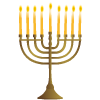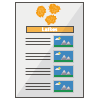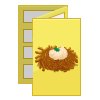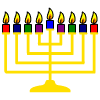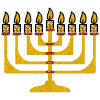Celebrating Chanukah with Purple Mash
Nov. 30, 2022
This year, the Jewish holiday Hanukkah, or Chanukah, runs from Sunday 18th December to the evening of Monday 26th December.
What is Chanukah?
The holiday remembers a period in history over 2000 years ago when a king called Antiochus banned the Jewish people at the time from worshipping God and set his armies up to destroy the holiest of Jewish buildings; the Temple. One core Jewish belief is not to worship idols, but he forced Jews to bow down to his statue, which he placed in the Temple. His armies smashed up Jewish objects in the Temple including the Menorah. The menorah was a seven-branched oil lamp that was permanently lit. Judah Maccabee, the leader of the Jews at this time, and his small army fought a long battle over several years and managed to defeat Antiochus. They re-lit the menorah but only had enough oil left to last for one day. The journey to collect more olives and make more oil would take eight days. However, by a miracle, the oil lasted eight days.
Chanukah is the celebration of this miracle. If you go to any synagogue nowadays, you will always see this eternal light lit to remember the Temple and the Jewish people’s relationship with God.
The Chanukkiah
The word Chanukah means ‘dedication’ in Hebrew, and the holiday is often called the Festival of Lights. It is celebrated with the lighting of the Chanukkiah. A Chanukkiah is like a Menorah but has 9 branches; eight for the eight days of the miracle and one additional candle, the Shamash (helper), that is used to light the other eight. This symbolises the candles as being decorative and memorial rather than working candles. On each of the holiday’s eight nights, another candle is lit after the sun has set. On the last night all the candles will be lit. Families will recite blessings and sing songs during this ritual and display the Chanukkiah prominently in their window as a reminder of the miracle that inspired the holiday.
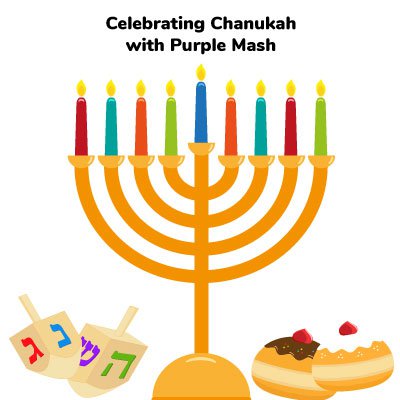
Other Chanukah traditions
Jewish people also remember the miracle by eating foods cooked in oil such as potato and onion pancakes called latkes and doughnuts. Children also play a game called Dreidel where the Hebrew letters on a spinning top represent the phrase ‘A miracle happened there’. Depending upon the upmost letter, you either win or lose your Chanukah Gelt (chocolate coins). Jewish people also exchange gifts at this time of year.
Purple Mash resources for Chanukah
Here at 2Simple, we are celebrating Chanukah using Purple Mash. We have several resources for you to use in your classrooms to celebrate this holiday. You can use our Chanukah writing template to write about the Jewish festival and why it is important for the Jewish religion. We also have a recipe template available for you to write a traditional recipe for Latkes and you can find out how the traditional potato and onion pancakes are made. This can also be printed off so your pupils can take them home to bake. There's also a Leaflet on how to make Latke’s so your pupils can practise their instructional writing skills.
There are lots of different 2Paint Chanukkiah templates to choose from. we have several activities for your class to use. Paint and decorate the most colourful Chanukkiah, put the candles in the correct position and even find out about what each candle represents or use our Chanukkiah Textures activity to explore alternate textures. All this and more can be found in the Chanukah area of Purple Mash.
Not a subscriber?
You can access everything Purple Mash has to offer with a free 14-day trial. Click here to register.
Share your work with us
We'd love to see what you do to celebrate Chanukah with Purple Mash. You can share your projects with us on our Twitter and Facebook feeds.
